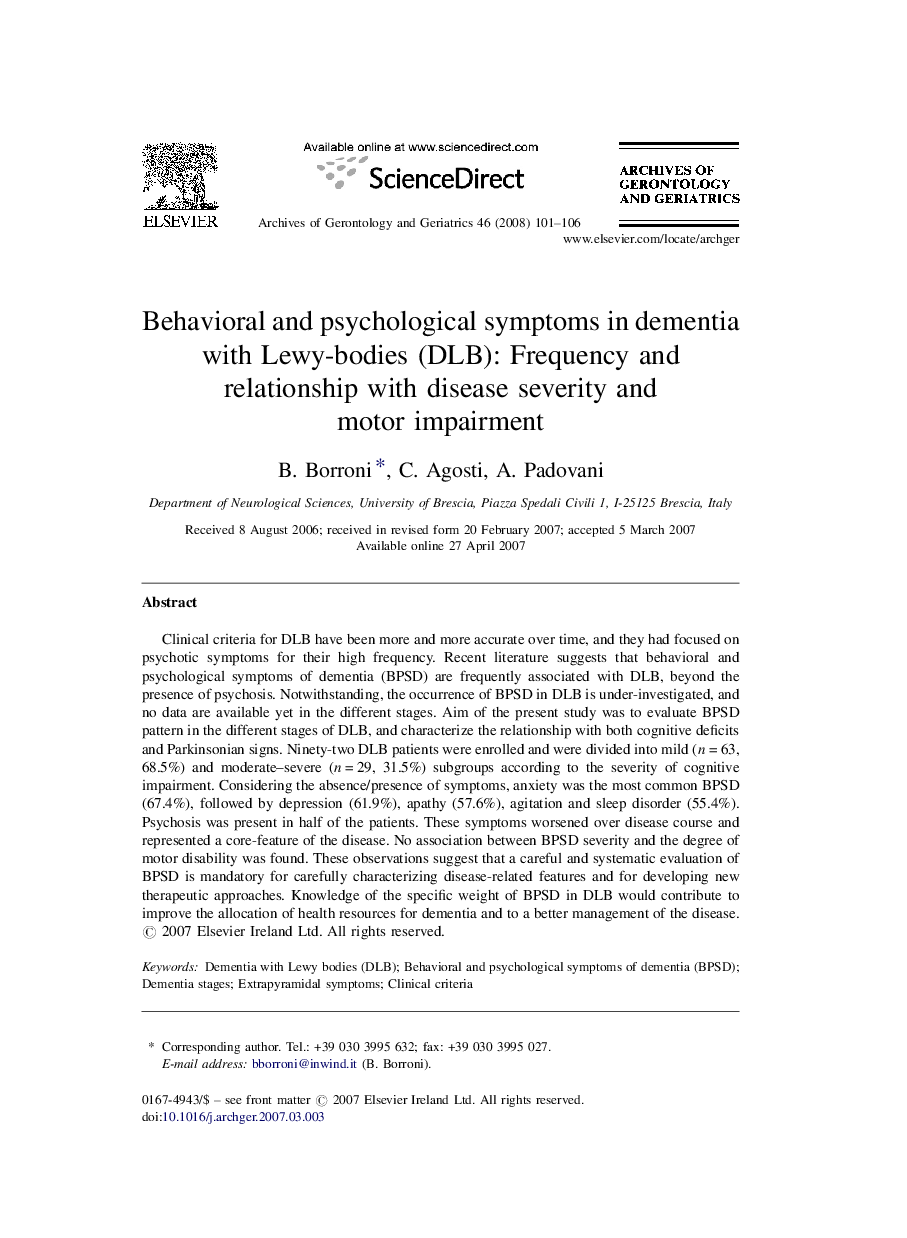| Article ID | Journal | Published Year | Pages | File Type |
|---|---|---|---|---|
| 1904076 | Archives of Gerontology and Geriatrics | 2008 | 6 Pages |
Clinical criteria for DLB have been more and more accurate over time, and they had focused on psychotic symptoms for their high frequency. Recent literature suggests that behavioral and psychological symptoms of dementia (BPSD) are frequently associated with DLB, beyond the presence of psychosis. Notwithstanding, the occurrence of BPSD in DLB is under-investigated, and no data are available yet in the different stages. Aim of the present study was to evaluate BPSD pattern in the different stages of DLB, and characterize the relationship with both cognitive deficits and Parkinsonian signs. Ninety-two DLB patients were enrolled and were divided into mild (n = 63, 68.5%) and moderate–severe (n = 29, 31.5%) subgroups according to the severity of cognitive impairment. Considering the absence/presence of symptoms, anxiety was the most common BPSD (67.4%), followed by depression (61.9%), apathy (57.6%), agitation and sleep disorder (55.4%). Psychosis was present in half of the patients. These symptoms worsened over disease course and represented a core-feature of the disease. No association between BPSD severity and the degree of motor disability was found. These observations suggest that a careful and systematic evaluation of BPSD is mandatory for carefully characterizing disease-related features and for developing new therapeutic approaches. Knowledge of the specific weight of BPSD in DLB would contribute to improve the allocation of health resources for dementia and to a better management of the disease.
